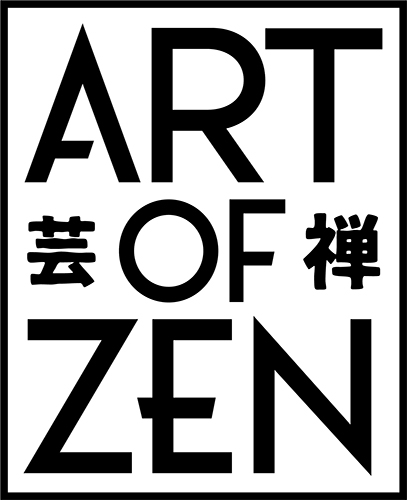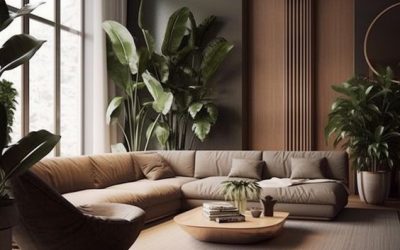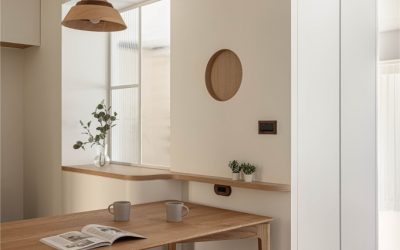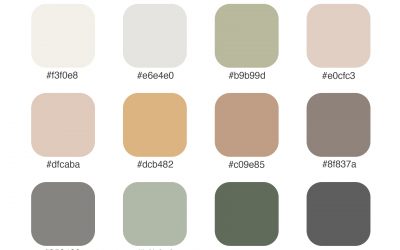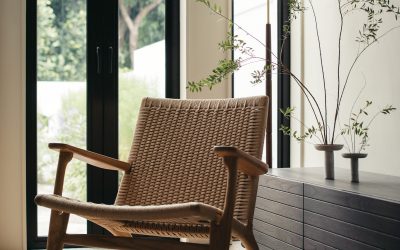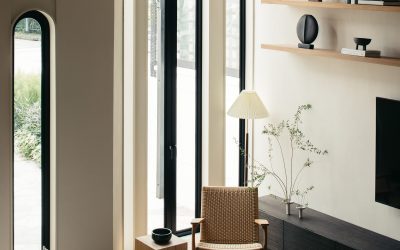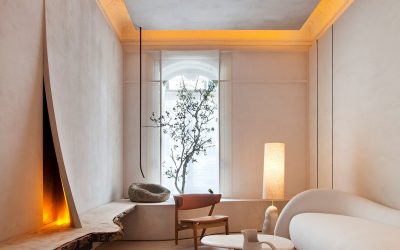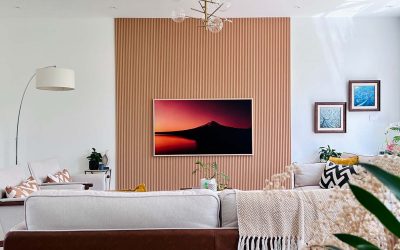Master the home bedroom refresh and transform the space into a serene and stylish retreat with these 10 easy steps.
Interior Design
This interior design category focuses on styles that blend simplicity with depth, such as Japandi style, Muji style, wabi-sabi, and zen-minimalism. These design philosophies not only transform spaces but also enhance daily living by fostering a serene and mindful environment. Each style, with its distinct characteristics, contributes to creating harmonious interiors that are both functional and spiritually nourishing.
Japandi Style: Where Japan Meets Scandinavia
Japandi style, a hybrid of Japanese minimalism and Scandinavian functionality, creates soothing, well-balanced spaces. It emphasizes clean lines, natural materials, and a muted color palette. For those looking to adopt this style, our article, 10 Steps to Create a Beautiful Japandi Home, offers practical advice. It guides you through essential steps, from choosing the right furniture to selecting calming colors.
Color plays a pivotal role in Japandi interiors, setting the mood and enhancing spatial aesthetics. Our detailed guide, Master the Ultimate Japandi Color Palette, helps you select hues that not only complement the style but also bring tranquility and warmth to your home. This resource is invaluable for those aiming to achieve a cohesive look that bridges Nordic cool with Eastern calm.
Embracing Wabi-Sabi: Perfectly Imperfect
Wabi-sabi represents the beauty of imperfection in interior design. This Japanese philosophy appreciates the aged, the weathered, and the incomplete. For a deeper understanding, refer to Embracing Wabi-Sabi in Interior Design and Art. This article explores how embracing wabi-sabi can create a home that feels authentic and lived-in. It encourages finding beauty in the flaws and simplicity of your surroundings.
Zen-Inspired Minimalism: The Art of Less
Zen-inspired minimalism is about more than just decluttering physical space. It also involves clearing the mind and soul. Our feature, Zen-Inspired Minimalism: Finding Harmony in Simplicity, discusses how minimalism inspired by Zen practices can lead to a more harmonious and focused lifestyle. It guides readers through the principles of reducing clutter and choosing elements that have both purpose and beauty.
Conclusion: Designing Spaces for Serenity
Our Interior Design category serves as a resource for those who aspire to create spaces that reflect calmness and clarity. Whether you are drawn to the muted elegance of Japandi, the raw beauty of wabi-sabi, or the thoughtful simplicity of Zen minimalism, each style offers unique pathways to transform your environment. By integrating these design philosophies, you can craft interiors that not only look spectacular but also provide comfort and peace.
Explore our articles to gain more insights and practical tips on embracing these transformative styles in your own home. Each design approach allows you to curate spaces that are not just visually appealing but are true sanctuaries for living well.
10 Facts About Japandi Design You Should Know
Explore the serene world of Japandi interior design with our detailed FAQ. Learn how this blend of Japanese minimalism and Scandinavian functionality can transform your space into a tranquil haven of simplicity and natural beauty.
Embracing Simplicity: The Muji Interior Design Style
Discover the essence of Muji interior design style, its principles, and how it contrasts with Japandi. Plus, a comprehensive guide on integrating the Muji style into your home in 10 simple steps.
Master the Ultimate Japandi Color Palette for a Tranquil Home Oasis
This Japandi color palette is a meticulously curated collection of hues that reflect the style’s core principles of simplicity, nature, and warmth.
Key New Trends in Japandi Interior Design for 2024
Discover the emerging trends in Japandi interior design for 2024, blending Japanese minimalism with Scandinavian functionality. Learn about the key elements shaping this unique aesthetic.
10 Steps to Create a Beautiful Japandi Home
Here are 10 simple steps to transform your home into a harmonious and balanced haven that embodies the essence of Japandi design.
Embracing Wabi-Sabi in Interior Design and Art
Discover the hidden elegance in flaws and imperfections with the ancient Japanese philosophy of Wabi-Sabi in interior design.
Zen Art and Japandi Design: A Harmonious Blend of Simplicity and Mindfulness
Explore the world of Zen art, where simplicity, spontaneity, and mindfulness converge, and discover how it seamlessly integrates with Japandi style and design.
Infusing Japandi Design into Your Scandinavian Home: The Zen Blueprint
By understanding the foundations of Japandi design, blending minimalism with natural elements, embracing neutral color palettes, and striking the perfect balance in furniture and accessories, you can create a Zen-inspired living space that exudes tranquility and style.
